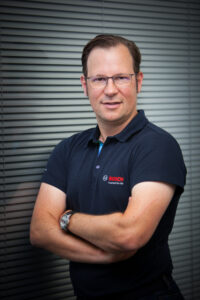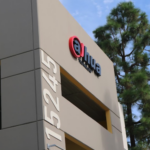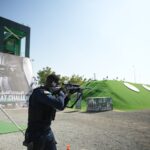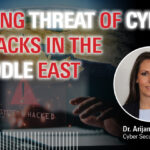Always Safer and Fit for the Future With Bosch – Innovation for Life

Thomas A. Knauel, Director of Bosch Product Management, discusses Bosch’s leadership in innovation by incorporating multi-sensor detection, AI, and IoT into its fire safety solutions and delivering enhanced speed, precision, and reliability in line with the brand’s “Invented for Life” philosophy
Today’s customers typically expect digitally enabled products and services that they can access and operate at all times at home, at work, and on the go. Bosch is a technology-driven company in an increasingly connected world. The development of each new product embraces the latest innovations, including multi-sensor capabilities, artificial intelligence, deep learning, and the Internet of Things. And these smart technologies have been embedded within the innovative portfolio of Bosch Fire detectors, alarms, and related cutting-edge systems and services.
a&s Middle East: You are the head of Bosch Fire Product Management. Tell us more about yourself, when did you start working for Bosch Fire, what does your role include, where have you worked before and in what positions, and a bit about your education?
Knauel: I joined Bosch End of 2000 as a management trainee in the area of sales and marketing. Two years later I had the opportunity to join the building technologies division as a product manager for fire alarm systems. Did that for a few years and then moved with Bosch to Singapore for a regional sales management role. Returning to Germany I took on the leadership role for product management in Bosch for fire alarm systems. Today I’m responsible for Global Product management but also Strategy development for Bosch Fire. So, you can say I’ve been in the industry for 20-plus years. I quite like being exposed to different cultures and people. I am German but I have lived in the US, UK, Singapore, and China – which I enjoyed a lot.
a&s Middle East: What are the company’s plans for international business development following the announcement of selling three major divisions?
Knauel: As you correctly point out, Bosch is realigning its Building Technologies division. The company plans to sell most of the division’s product business. This includes the Video, Access and Intrusion, and Communication business units. But the product business with fire alarm systems will not be sold. In fact, our international fire detection business will continue with the same commitments and ambitions in all countries where we are present today. We will maintain our sales channels, partnerships, and contracts. Also, we will make further investments in our portfolio. So, we are excited to continue to contribute with our partners to the success story of the Bosch life safety business, which lasts already for over 100 years.
a&s Middle East: Does Bosch have some focus on specific industries as part of your strategy?
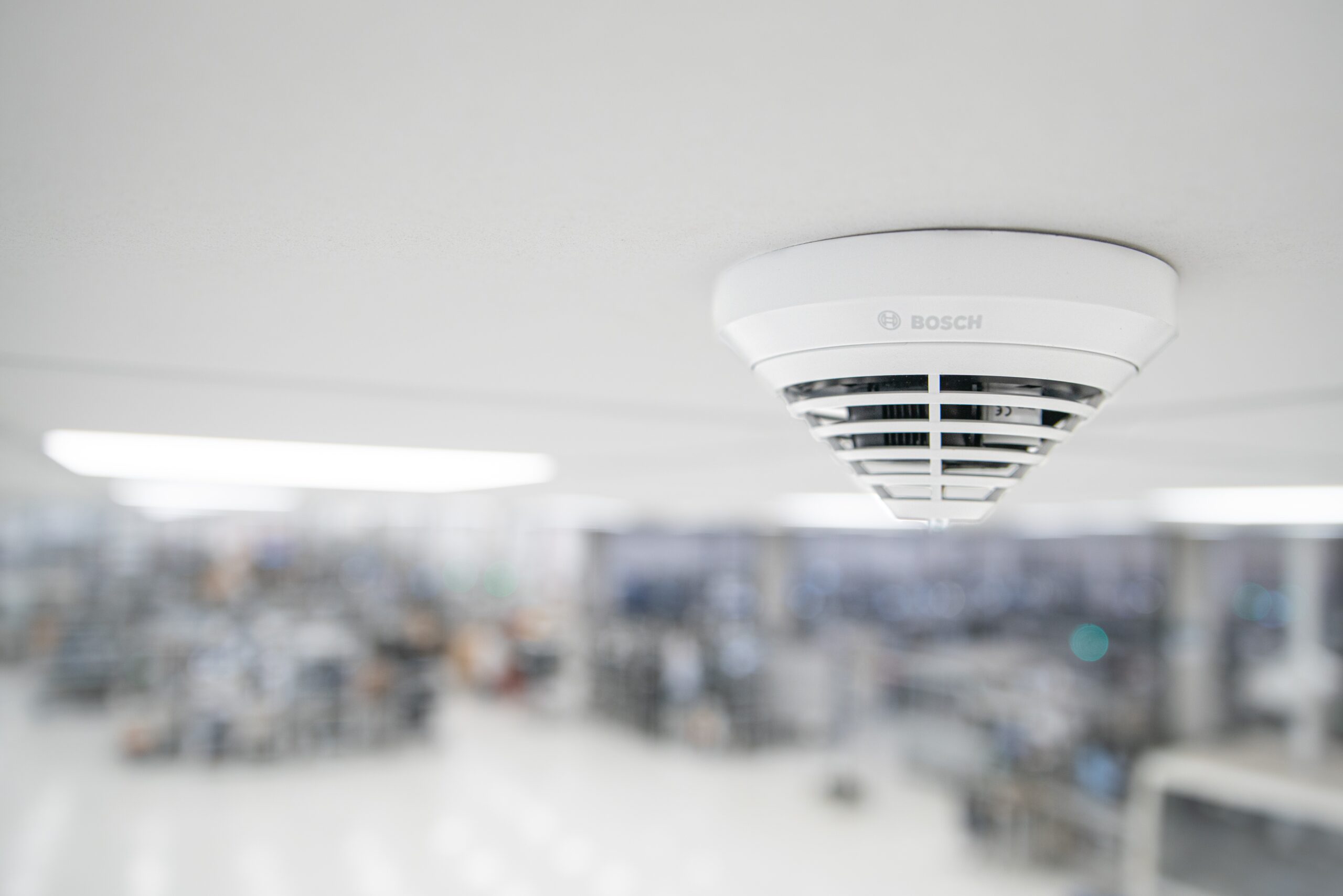
AVENAR 4000 fire detectors is electromagnetic-compatible and therefore informed of disturbance values from sources such as equipment, which greatly reduces the risk of false alarms and subsequent downtime and evacuations
Knauel: Bosch offers an extensive range of products in the field of fire detection. These products allow us to realize tailor-made solutions for almost any type of project, from manufacturing plants to commercial buildings, from hospitals to airports. Now, our systems and products bring unique capabilities to overcome specific challenges faced by different industries. Let me share a few examples. In case of an alarm in hospitals, many patients require assistance for descending stairwells while elevators are out of use. The Bosch Smart Safety Link enables the integration of voice alarms with fire detectors and assists safety managers with emergency evacuations allowing for a highly effective gradual evacuation approach. Next, unplanned downtime in manufacturing is extremely cost-intensive. Electrical machinery and electronic devices on industrial plants create electromagnetic disturbance values which risk disruption to production and other operations. The eSmog feature of AVENAR 4000 fire detectors is electromagnetic-compatible. The detector is therefore informed of disturbance values from sources such as equipment, which greatly reduces the risk of false alarms and subsequent downtime and evacuations.
In hotels, museums or flagship office buildings aesthetics play a major role. Our flat fire detectors are ultra-slim with a smooth surface, thereby being unintrusive and hardly visible on the ceiling. We even offer a choice of 16 RAL colors to complement interiors. And a last example today. Detecting fires in half-open spaces is difficult due to wind and weather effects. Our AI video-based fire detection solution, AVIOTEC, provides outdoor fire detection near buildings where virtually no other detection technology is available. It enables the detection of smoke and flames even in windy conditions. This is ideal for outside storage areas, hangars at airports, or solar plants.
a&s Middle East: Sensors using multi-criteria are already prevalent in the market for a while. Is complex data fusion of several sensors which thoroughly evaluates all combined phenomena before triggering any reactive output an intelligent innovation with huge potential for fire safety?
Knauel: Yes, it is. Bosch was one of the first companies to introduce true multi-criteria detection to the market. The trend towards multi-sensor technology will continue as false alarms are still an issue in our industry. Reasons for false alarms are manifold. Some are more difficult to address from a manufacturer’s perspective than others. For instance, human error can be considered in the product design but not completely mitigated. However, false alarms stemming from environmental factors such as steam from cooking or showering, dust and dirt, or aerosols from processes in industry or laboratory environments can be solved using technology. The AVENAR detector 4000 series provides a superior level of fire detection. It allows optical and thermal sensors to be combined with sensors for chemical matter, such as carbon monoxide gas. This means monitoring for all of these phenomena can occur simultaneously. The captured detection data is then instantly analyzed against the data of real fire patterns. Genuine fire alerts are triggered rapidly while the level of robustness against nuisance alarms is impressively high: AVENAR 4000 detectors can, for instance, distinguish combustible CO gas from harmless steam and real smoke particles from regular dust particles using the so-called Dual Ray Technology. This is an outstanding benefit for safety managers.
a&s Middle East: How have AI and machine learning been affecting the fire safety industry? Please illustrate the answer with examples and trends.
Knauel: AI and machine learning are increasingly revolutionizing everything from production lines to healthcare diagnostics but also our daily lives. AI models with deep learning algorithms can be developed to recognize, categorize, characterize, and process input data, including imagery, speech, language, and behavior. In the fire domain, AI enhances fire prevention, detection, response, and risk assessment. These technologies are being integrated into various aspects of fire safety systems, from monitoring fire hazards in real time to automating emergency responses. Let me give you some examples. AI-powered fire detection systems use deep learning algorithms and computer vision to analyze video footage in real time. These systems can identify fire hazards and detect smoke or flames much faster and more accurately than traditional methods, reducing response times and thus limiting damage. Also, machine learning models can be used to predict potential fire risks by analyzing vast amounts of historical data, including environmental factors (such as weather, humidity, and vegetation) and human activity patterns. This data helps in assessing high-risk areas, which can be useful for resource allocation and proactive risk mitigation. Thirdly, AI can be used in the planning but also maintenance phases of a project or an existing installation increasing the efficiency and effectiveness of the relevant activities. For instance, we are working on a System Planning Co-Pilot which will help planning engineers in their daily work.
a&s Middle East: Video-based fire detection technology has been in focus of Bosch Fire R&D for the last couple of years. What are its features and advantages compared to other fire alarm technologies?
Knauel: Bosch Fire has adopted this technology to recognize the behavior of real smoke and flames: AVIOTEC 8000i IR video-based fire detection uses smart functionality to reliably detect fires at their source within seconds. The devices record live footage of an area with a 4-megapixel video camera inside a protective IP67 housing, which enables high-quality images in all environmental conditions. It analyzes this footage for any indication of a fire, based on hours of pre-stored footage of real flames and smoke. AVIOTEC supports business continuity as well as safety with deep learning algorithms which can be trained and adapted to recognize harmless phenomena and activities, such as cigarette smoking, which sets off false alarms in traditional detection systems. This technology makes AVIOTEC highly dependable. Furthermore, its dual-output relay helps safety managers differentiate between system troubleshooting requirements and fire alerts.
a&s Middle East: What kind of spaces has AVIOTEC been specifically designed for and can you give us an example?
Knauel: AVIOTEC has been specifically designed for environments where traditional fire detection systems may face some limitations. For example, in warehouses or aviation hangars, AVIOTEC is particularly useful because traditional smoke detectors may have delayed responses due to high ceilings, large open spaces, or ventilation systems that disperse smoke before it reaches the detectors. Industrial environments, especially those with machinery, flammable materials, or chemicals, benefit from AVIOTEC’s rapid fire detection, as it can detect fire or smoke visually without relying on heat or particles reaching a detector. And as mentioned before our Video-based fire detection system offers a fire detection solution for outdoor areas for which other fire detection products simply can’t be applied to.
a&s Middle East: As in other parts of our lives, IoT is being integrated into fire safety systems as well. Have you managed to catch up with this trend and in what way?
Knauel: The Internet of Things (IoT) supports the use of smart devices, provides connectivity for smart homes, and accelerates and enhances productivity with instant data transfer and data-based decision-making. IoT is being continually integrated into our lives and work and, more recently, in specialized areas such as fire safety systems. IoT-enabled systems are, however, not new to the Bosch Fire portfolio. The groundbreaking Remote Services have already been available to system integrators and maintenance workers for several years. This solution allows them to conduct fire safety system health checks at a distance over tablets and smartphones, thanks to real-time connectivity and data feeds. This was already a huge leap forward in remote maintenance of fire alarms for advanced fire safety – and a huge timesaver with spared journey times of traveling to sites to check, for example, the remaining battery life of the equipment.
a&s Middle East: But, Bosch has not stopped there. You have also introduced Nexospace Fire System Explorer. Tell us more about it. What was the idea behind its development?
Knauel: A decade ago, we pioneered remote services by connecting fire alarm systems to the IoT. Well, now, with NEXOSPACE, we are taking it a big step further. The Bosch Building Technologies digital suite, NEXOSPACE, has now been adapted to include data capture, management, and analysis of all Bosch Fire Alarm Systems with the NEXOSPACE Fire System Explorer (FSE). Interconnectivity of FSE with all fire safety equipment and devices empowers system integrators with full transparency of an entire fire safety system. This increases efficiency for integration, maintenance, and upgrades and reduces false alarms even further thanks to rapid remote troubleshooting and fewer operational interruptions. System integrators managing fire safety for multiple sites or buildings in distant, hard-to-reach locations or extremely dusty or humid environments will be relieved of the cumbersome effort of frequent up-close system health checks. Similarly, those responsible for sites with high fire loads can stay continually vigilant and up-to-date over the clear interface of the Bosch FSE. The smart, fully IoT-ready functionality and intuitive user experience of FSE will win over customers from all industries who are interested in investing in a fire safety system at the competitive edge.
a&s Middle East: What large projects has Bosch Fire been involved with recently and what is the customers’ feedback?
Knauel: Bosch Fire Alarm Systems have been successfully implemented in numerous high-profile projects globally, showcasing their adaptability and reliability in diverse environments. Our systems are installed in Germany’s largest airports Frankfurt and Munich but also internationally. One notable example here is the Mactan-Cebu International Airport in the Philippines. This rapidly growing hub required a scalable and modular fire detection system to ensure the safety of millions of passengers annually. Bosch’s solution provided comprehensive fire protection, integrating advanced smoke detection technology to offer rapid response and clear, timely alerts throughout the facility. Another project, now from the Adria region, is Continental’s tire manufacturing facility in Timisoara. Like many industrial environments, it faced significant fire safety challenges due to the presence of flammable materials and complex production machinery. Bosch Security addressed these challenges by installing AVENAR panels 8000 along with AVENAR 4000 detectors. Bosch’s tailored approach not only met but exceeded Continental’s stringent safety requirements.
a&s Middle East: Having all these innovations in mind, what technologies and solutions can we expect from Bosch Fire in the recent future?
Knauel: At Bosch, we are committed to pushing the boundaries of technology. That’s in our DNA. In the fire safety space, we will continue and expand to integrate AI, IoT, and predictive analytics into our portfolio, providing future-proof solutions that deliver greater precision, faster response times, and improved reliability. Allow me to keep this a little vague but let me say this: Customers can expect continuous innovation that enhances both safety and business continuity across all sectors.
Middle East Fire Safety Market is Shifting Towards AI and IoT Solutions

Onur Sönmez, Bosch’s Head of Sales and Marketing for Fire Systems in Türkiye, Middle East, and Africa
Onur Sönmez, Bosch’s Head of Sales and Marketing for Fire Systems in Türkiye, Middle East, and Africa, highlights the growing demand for innovative fire safety technologies in the region and Bosch’s strategy to educate the market while maintaining strong local partnerships.
a&s Middle East: Do you find that the Middle East is mature for the latest fire technologies we have been discussing with your Product Manager? Are you receiving customer inquiries about these types of technologies and how do you communicate its benefits to the market?
Sönmez: From my experience, the traditional approach to Fire Alarm Systems is still dominating the market, but we also start to observe that demand for more innovative solutions is a growing trend. Businesses and organizations become more aware of the critical role fire safety plays in ensuring operational continuity and protecting assets. In fact, we are increasingly receiving inquiries from customers who are interested in the types of technologies we’ve been discussing, such as AI-based fire detection, IoT-enabled systems, and video-based solutions like AVIOTEC.
To communicate the benefits of these technologies, we focus on educating the market and performing POC tests about how these solutions not only enhance safety but also provide long-term value through reduced false alarms, quicker response times, and integration with existing smart building systems.
The market in the Middle East may still be in the early stages of adopting these future-proof solutions, but I believe we will see a much broader shift toward these advanced fire safety technologies in the near future.
a&s Middle East: How will the sales of other divisions affect Bosch customers in our region?
Sönmez: The upcoming sale of Bosch’s Video, Access and Intrusion, and Communication divisions will not affect our fire alarm systems business in the Middle East region. We remain steadfast in our commitment to fire detection solutions and will continue to deliver the same exceptional service and support to our Middle East customers. Our fire detection operations will keep all current sales channels, partnerships, contracts, and sales local teams intact. This ensures that our Middle East customers will continue to benefit from Bosch’s renowned expertise and innovation in life safety.
a&s Middle East: What is the strategy for the Middle East region for fire detection in the next few years?
Sönmez: The market serves a diverse range of verticals, including commercial and residential real estate, oil and gas, hospitality, manufacturing, healthcare, and transportation. Each of these sectors demands customized fire protection solutions to address specific needs and comply with local regulations. With construction projects on the rise, the demand for advanced fire systems that seamlessly integrate with building automation and monitoring technologies is also growing. As a global fire alarm system manufacturer, our focus is on building strong relationships with key stakeholders, including architects, consultants, contractors, and facility managers. Providing comprehensive solutions that not only meet regulatory requirements but also enhance overall safety and operational efficiency sets us apart in the market. Given the varied regulations and market dynamics in each country across the region, our primary strategy is localization. To achieve this, we work with local system integrators (SIs) who are well-equipped to meet the specific needs of their markets. Together with my team, we actively support these local SIs, offering commercial training and organizing events to promote Bosch Fire Alarm’s unique selling points. In addition to these efforts, we implement a wide range of sales and marketing campaigns, both locally and globally. This includes product information webinars, sessions on fire alarm system solutions tailored to key verticals, as well as online commercial and technical training. We also conduct sales campaigns targeting specific product groups. Furthermore, we participate in major local events and exhibitions to showcase our key products and engage directly with stakeholders and decision-makers on various projects.


